![]()
Wed, April 18, 2012 | This study[1] is originally published by The Meir Amit Intelligence and Terrorism Information Center
Section I: Latin America as an Arena for Iranian-Hezbollah terrorism
Overview
Iran regards Latin America as an arena for terrorist activity, which the Iranian regime considers an instrument for promoting its strategic objectives. The designated Iranian bodies active in those areas are the Quds Force and the ministry of intelligence and security. They support Hezbollah and use it as Iran’s most important proxy in its efforts to launch terrorist activities. According to the American media, in recent years the Quds Force extended its activities throughout Latin America, especially in Venezuela.[11]
In April 2010 a non-classified US Defense Department report was presented to Congress dealing with Iranian military strength. It stated that the Quds Force (which engages in terrorism and subversion around the world) had increased its presence in Latin America, particularly in Venezuela. At the end of 2011 former American intelligence officials told the Washington Post that the presence of Quds Force officers and other military personnel in diplomatic missions enhanced “Iran’s ability to carry out covert activities, sometimes in conjunction with members of the Iran-backed Hezbollah militant group that operates extensive networks in Latin America and maintains ties with drug cartels.”[12] However, the commander of the US Southern Command, General Douglas Frazer, said that Iranian activity in Latin America focused on diplomacy and commerce, adding that he had not seen a growth of Iran’s military presence in the region.[13]
Evaluation of Iranian-Hezbollah Terrorist Capabilities in Latin America
During the 1990s both Iran and Hezbollah demonstrated formidable capabilities to carry out showcase terrorist attacks against Jewish targets. In 1992 they used a car bomb driven by a suicide bomber to attack the Israeli embassy in Buenos Aires, killing 29 civilians. Two years later they used the same method to blow up the Jewish community center (the AMIA building) in Buenos Aires, killing 85. Since then, Iran and Hezbollah have not carried out terrorist attacks in Latin America against Israeli targets, and almost none against the United States (in several instances, local criminal and terrorist networks have been involved in planning terrorist attacks on American soil, which, however, were prevented.) In our assessment, since the two attacks in Argentina, Iran and Hezbollah have focused on constructing covert terrorist networks in Latin America which will be activated when the Iranian regime considers it appropriate.
In our assessment, the Iranian terrorist-subversive infrastructure has several layers: one is the Iranian embassies, where in our assessment Quds Force and Iranian intelligence operatives are stationed and can execute terrorist attacks if such a decision is made;[14] another is the Arab-Muslim communities, some of them Shi’ite, which are exposed to Iranian attempts to export the Islamic Revolution. They may serve as a reservoir from which collaborators can be recruited as agents to collect intelligence, prepare the logistics for and participate in a terrorist attack. Another layer is Iran’s involvement in crime, which might be turned to terrorism (for example, the attempted assassination of the Saudi Arabian ambassador to the United States). Iranian and Hezbollah terrorist operatives are sent from Iran and Lebanon to engage local collaborators in countries where terrorist attacks have been planned.
As for Hezbollah, in our assessment it has its own covert networks in Latin America, routinely used to raise the funds necessary for Hezbollah’s activities in Lebanon (to supplement funds received from Iran) and to maintain the routine activities of its various terrorist networks (which will be put into operation when Iran and Hezbollah decide the time is right). Criminal activities are an important source of revenue for Hezbollah, carried out in conjunction with local drug cartels and other criminal organizations. Hezbollah has close relations with the drug cartels in Mexico and Colombia and its presence is prominent in the free trade zones in Latin America (such as the triple frontier, where Brazil shares a border with Argentina and Paraguay, and Venezuela’s Margarita Island.)
Venezuela as an Arena for Terrorism
Overview
In our assessment, Iran and Hezbollah maintain cells in Venezuela which are potentially capable of carrying out terrorist activities. The close political and economic relations between Iran and Venezuela, and the regular Caracas-Tehran-Damascus airline flights, make it easy for Iran and Hezbollah to carry out terrorist activities — often combined with crime — in Venezuela. In all probability the activities are spearheaded by the Quds Force, with the support of Hezbollah and other Iranian bodies. In addition, Venezuela serves as a platform for Iran and Hezbollah’s terrorist activities in other Latin American countries.
American experts dealing with Latin America are divided on the issue of Hezbollah’s operative capabilities in Latin America in general and in Venezuela in particular. While the State Department claims that Hezbollah does not have operational terrorist cells in Latin America (the CRS Report), in February 2012 Ambassador Roger Noriega told a Senate subcommittee that at least two Iranian-Hezbollah terrorist networks were active in Latin America: one, he said, was in Venezuela and included local supporters of Iran and Hezbollah, and the other was operated by the Quds Force. Those networks, he said, had at least 80 operatives and were active in at least 12 Latin American countries, especially Brazil, Venezuela, Argentina and Chile.
The Ghazi Nasreddin Network
In Venezuela Ghazi Nasreddin (aka Abu Ali) heads a local network affiliated with Hezbollah and composed of local collaborators.[15] Ghazi Nasreddin is a Lebanese Shi’ite Muslim who became a Venezuelan citizen 11 years ago. He is a diplomat in Venezuela’s foreign service and is the second most important person in the Venezuelan embassy in Syria.[16] He was (and may possibly still be) president of the Shi’ite Islamic center in Caracas. He has exploited his diplomatic status to transfer funds to Hezbollah and to transport Hezbollah operatives to and from Venezuela.[17]
On June 18, 2008, the US Treasury Department said in an announcement that it was freezing the American assets of two Venezuelan residents, Ghazi Nasreddin and Fauzi Knaan “for providing financial and other support to Hezbollah.” In addition, American citizens were banned from entering into commercial relations with either of them. According to the Treasury report, Ghazi Nasreddin had spoken to potential donors about contributing to Hezbollah and provided them with account numbers for depositing funds which would reach Hezbollah directly.[18] A 2010 Treasury Department report on international terrorism also voiced concern over Hezbollah’s fund-raising activities in Latin America.[19]
Ambassador Roger Noriega told the Senate subcommittee that Ghazi Nasreddin was one of Hezbollah’s most important assets. That was because of his diplomatic status in Damascus and his close relations with Hugo Chávez and Tarek el-Aissami, Venezuelan minister of the interior. According to Ambassador Noriega, Ghazi Nasreddin’s brother, Abdallah Nasreddin, a former member of the Venezuelan Congress, was connected to his brother’s network. He exploits his position as president of the Venezuelan branch of the Latin American Islamic-Arab federation to maintain contacts with Muslim communities in other Latin American countries.[20] Today he is reportedly a money-launderer and in collaboration with Hezbollah manages commercial enterprises in Latin America. According to Ambassador Noriega, his younger brother, Uday Nasreddin,[21] is responsible for establishing paramilitary training centers on the Venezuelan island of Margarita. He recruits Venezuelan civilians through local committees of Hugo Chávez’s radical supporters (“Circulos Bolivarianos”) and sends them to Iran for follow-up training.
Exploiting the Caracas-Damascus-Tehran Route for Operational Purposes
Since 2007 there have been regular weekly Iranair and Conviasa [Venezuela] flights between Iran and Venezuela, although they have become less frequent since 2010.[22] In recent years the American State Department expressed concern, and in its annual report on international terrorism said that the flights were only superficially inspected by the Venezuelan immigration and customs services.
Various reports have stated that the flights were not conducted like ordinary commercial flights. For example, some of the passengers from Tehran were separated from the others at the Caracas airport and entered the country without being subjected to the customary procedures. On the other hand, ordinary passengers and their documents were subjected to close scrutiny by both the Iranian and Venezuelan governments.[23]
The following are two concrete examples of the operational use terrorist operatives have made of Iranair and Conviasa:
1) In 2011, Mohsen Rabbani, a prominent Iranian who combines subversion and terrorist activities in Latin America (See below), arrived in Venezuela under an assumed name on a flight from Tehran. From there he continued to Brazil, a focal point for his activities (See below). According to newspaper articles on his arrival in Brazil, intelligence agents (probably Brazilian) call the flights from Tehran to Caracas “Aeroterror,” because they are used by suspected terrorists to fly to Latin America.[24]
2) In 2007 an attempted terrorist attack carried out by a terrorist cell from Trinidad was prevented at Kennedy Airport. According to an announcement from the United States Attorney General, the terrorists were in contact with Iranians, and one of the names mentioned was Mohsen Rabbani. Three of the terrorist were detained in Trinidad in June 2007, and one, Abd al-Qader, who had been instructed to contact the Iranians, was detained on board a plane bound for Venezuela, from where he planned to fly to Iran.
Margarita Island as a Venue for Criminal and Terrorist Activity
Margarita Island, off the coast of Venezuela, has been mentioned in recent years as a focal point of criminal and terrorist activity involving Hezbollah. It is a small but wellpopulated island, home to about 400,000 people. About 4,000 of them are Arab immigrants, most of them of Syrian and Lebanese origin, with cultural links to their mother countries (it has been reported that the local cable networks broadcast Al-Jazeera TV and Lebanese and Syrian channels). Despite their small number, they have economic influence, are involved in trade and own travel agencies and banks.
Venezuela declared Margarita Island a free trade zone, facilitating the extensive criminal activity taking place there. Hezbollah, well-entrenched within the local Lebanese-Syrian population, participates in the criminal activity. There have been many reports of drug dealing, money laundering, collecting donations for terrorist organizations and document forging (including of passports, IDs and letters of passage for terrorist operatives). Some of that activity, including drug-smuggling, is directed against the United States.
Testifying before the Senate on February 16, 2012, Ambassador Noriega said that in recent years security personnel trusted by Hugo Chávez had provided Hezbollah with material aid. Testifying before a House subcommittee in July 2011, he said Margarita Island had become a safe haven and center of Hezbollah operations in the Americas, and that their activity on Margarita Island had eclipsed the area known as the triple frontier between Argentina, Brazil and Paraguay (See below). He said that in the spring of 2010 two Hezbollah operatives managed training for terrorists who had been brought in from other countries in the region.[25]
Argentina as an Arena for Terrorism
Overview
The two most horrific terrorist attacks carried out by Iran and Hezbollah in Latin America were the showcase suicide bombing attacks of the first half of the 1990s. They were orchestrated by Iran and supported by a sleeper cell, part of the terrorist infrastructure constructed by Iran and Hezbollah in Argentina, one of many in Latin America. The presence of the infrastructure enabled them to organize and carry out two large, particularly deadly suicide bombing attacks in a relatively short time and with considerable fanfare and “success” from Iran and Hezbollah’s viewpoint. From Iran’s point of view, the attack was carried out at the acceptable cost of complicating Iran’s relations with Argentina and reinforcing Iran’s international reputation as a terrorism-exporting country.
The Car Bombing of the Israeli Embassy in Buenos Aires, 1992
In the early afternoon of March 17, 1992, a pickup truck driven by a suicide bomber and packed with explosives rammed through the gate of the Israeli embassy in Buenos Aires and detonated. Twenty-nine Israelis and Argentineans were killed and more than 220 were wounded, among them members of the Israeli diplomatic staff. Hezbollah, using the pseudonym “Islamic jihad,” claimed responsibility for the attack, professing it to be in revenge for the IDF killing of Hezbollah leader Sheikh Abbas Musawi the previous month (February 16, 1992).
In May 1999 the Argentinean supreme court concluded its investigation, and having determined that Hezbollah was responsible for the attack, issued a warrant for the arrest of Imad Mughniyeh, commander of Hezbollah’s military-terrorist apparatuses (Mughniyeh died in Damascus in 2008). An investigation carried out by Israel, whose results were made public in 2003, showed that the highest levels of the Iranian regime orchestrated the attack and authorized Hezbollah to carry it out. Former Israeli Foreign Minister Silvan Shalom told a press conference that it was clear to Israel that Hezbollah, using its external operational apparatus headed by operational commander Imad Mughniyeh, had been responsible for carrying out the attack.[26]

Left: The Israeli embassy building after the attack; Right: The Israeli embassy building after the attack (Photo The Israeli embassy building after the attack from the tags.walla.co.il website).
The Car Bombing of the Jewish Community Center (AMIA) Building in Buenos Aires, 1994
Overview
On July 18, 1994, at 9:53 in the morning, a powerful blast shook the Jewish community center (AMIA) building in Buenos Aires, killing 85 people in and around the building and wounding more than 300.
The front of the building collapsed and nearby buildings were damaged as well. The investigation revealed that the explosion had been caused by a suicide bomber driving a Renault van packed with about 400 kilograms (880 pounds) of explosives. It took several weeks to evacuate the bodies.
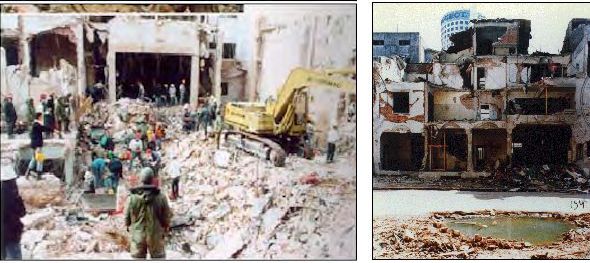
Pictures of the AMIA building after the attack. Left: Looking for victims. Right: The crater left by the explosion.
The Main Findings of the Argentinean Investigation
On October 25, 2006, Dr. Alberto Nisman, the Argentinean attorney general, and prosecutor Marcelo Martínez Burgos revealed the findings of the investigation, carried out by a specially appointed team. The findings were issued in a report more than 800 pages long and the main points were reported at a press conference. According to the information given, the investigation had unequivocally determined that the decision to bomb the AMIA building had been made by the leadership of the Iranian regime and that it had been carried out by Hezbollah, which served the Iranians as a proxy for implementing their policies.
In light of the report, Judge Rodolfo Corral issued international arrest warrants for seven highranking members of the Iranian regime and one senior Hezbollah terrorist operative, all of whom had been involved in the terrorist attack. One of the seven, some of whom still serve in high positions in the Iranian regime, was Ahmed Vahidi, today Iran’s defense minister and Quds Force commander at the time of the attack (1994). A warrant was not issued for the arrest of Supreme Leader Ali Khamenei, possibly for political reasons, even though the report explicitly stated that he had been party to the decision to carry out the attack.[27]
The following are the seven members of the Iranian regime and the Hezbollah terrorist operative (as of October 2006) who were involved in the AMIA bombing and for whom international arrest warrants were issued:
- Ali Akbar Rafsanjani, president of Iran;
- Ali Fallahian, minister of intelligence and security;
- Ali Akbar Velayati, foreign minister;
- Mohsen Rezai, commander of the Iranian Revolutionary Guards;
- Ahmad Vahidi, commander of the Revolutionary Guards’ Quds Force;
- Mohsen Rabbani, cultural attaché in the Iranian embassy in Buenos Aires;
- Ahmad Ashgari (aka Mohsen Reza Randjbaran), third secretary of the Iranian embassy in Buenos Aires;
- Imad Mughniyeh, head of Hezbollah’s foreign intelligence (Note: Mughniyeh, who commanded Hezbollah’s military-terrorist system, died in Damascus in 2008).
The Seven High-Ranking Iranians and the Senior Hezbollah Operative with Outstanding International Arrest Warrants
On November 10, 2006, Argentina’s attorney general asked to have international arrest warrants issued for the eight Iranians on the grounds that they had committed “a crime against humanity.” Two weeks later Argentina asked Interpol to issue the warrants. Interpol’s directorate, having studied the evidence presented by Argentina and Iran, decided to issue them. However, Interpol did not issue warrants for the arrest of former Iranian president Ali Rafsanjani, former foreign minister Velayati or former Iranian ambassador to Argentina, Hadi Soleimanipour, who was included in the Argentinean request, in our assessment because of political considerations.
At the beginning of April 2012, it was announced that former Argentinean president Carlos Menem would be tried for obstructing the investigation into the AMIA bombing. At Menem’s trial, the prosecution is expected to claim that at the time, evidence of the participation of local Argentineans in the the attack had been suppressed. Menem is accused of exerting pressure on Juan-José Galliano, the federal judge in charge of the AMIA case, to abandon inquiries into the possible involvement in the attack of a Syrian-Argentinean businessman named Alberto Kanoore Edul (Haaretz quoting Reuters, April 1, 2012).
Main Points of the Report[28]
The report states that the decision to carry out the attack was made not by a small isolated group of extremely radical Islamic functionaries, but was rather a decision extensively discussed and ultimately adopted by a consensus of the highest representatives of the Iranian government at the time. Its main points are the following:
1) The investigation concluded that the highest ranks of the Iranian regime had told Hezbollah to carry out the attack against AMIA. The Iranian regime employed Hezbollah’s terrorist infrastructure, which served as an instrument for realizing Iranian foreign policy objectives.
2) The report did not ignore the fact that the attack was carried out for reasons linked to the conflict in the Middle East (including the abduction of Mustafa Dirani and the Israeli bombing of the Hezbollah training camp in the Beqa’a Valley). However, based on the evidence collected, it concluded that the fundamental reason was the Argentinean government’s unilateral decision to terminate the nuclear materials and technology supply agreements that had been concluded some years previously between Argentina and Iran.
3) The report describes in detail how the Iranian upper echelons arrived at the decision to carry out the attack. It was the work of a group called the Special Affairs Committee, whose members at that time were Ali Khamenei, Ali Rafsanjani, Ali Fallahian and Ali Velayati. They met in the Iranian city of Mashhad on August 14, 1993 and decided to carry out a terrorist attack in Argentina.
4) The report also gives details of the vast intelligence network set up by the Iranian regime in Buenos Aires, without which they could not have been able to attack the AMIA building. According to the report, in the mid 1980s the Iranians began establishing a vast spy network which became a complete intelligence service and included the Iranian embassy and its cultural center in Buenos Aires. It also included extremist elements within Argentina’s Muslim communities in Buenos Aires and other cities. (Note: An excellent example of the link that existed and may still exist between Iran’s terrorist and intelligence activities on the one hand and its religious and cultural activities on the other.)
5) Mohsen Rabbani was posted to the Iranian embassy in Buenos Aires as a “cultural attaché.” He had also attended the Mashhad meeting, and after his return to Argentina, funds (detailed in the report) were transferred to finance the attack. The Argentineans have a great deal of evidence, including transcripts of telephone conversations, proving Rabbani’s involvement in logistical preparations for the attack. The report also states that Ali Fallahian, the Iranian minister of intelligence, was in charge of overall the operation’s coordination. (Note: For Mohsen Rabbani’s propaganda and subversive activities in Latin America, see below. He currently carries them out from Qom in Iran, where he went after he was deported from Argentina.)
6) The attack was carried out by Hezbollah terrorist-operatives who arrived in Argentina on July 1, 1994. Imad Mughniyeh, head of Hezbollah’s External Security Service, was responsible for running the operational squad and to that end entered Argentina at the beginning of July 1994. The Argentineans have records of many phone conversations involving Mughniyeh, the cell which carried out the attack, Hezbollah operatives in Lebanon and Hezbollah’s network in the Brazilian region known as the triple frontier.[29] On July 18 the last call received by the Imad Mughniyeh’s cell phone was recorded, indicating that they attack has been carried out.
7) On July 18, at 9:53 in the morning, a suicide bomber named Ibrahim Hussein Berro blew himself up inside a Renault van carrying 300-400 kg (660-880 lbs) of explosives. (Note: The Berros are a Shi’ite family in south Lebanon, some of whose members are involved in international drug trafficking.) The explosives were detonated in front of the AMIA building, killing 85 people and wounding 151, and collapsing the front of the building. The report states that the method of the attack was identical to the one employed two years previously in the attack on the Israeli embassy in Buenos Aires carried out by Hezbollah.
According to the report, the full version submitted to the judge included an appendix analyzing other terrorist attacks in which the Islamic Republic of Iran was involved. Common to all the legal decisions handed down regarding the attacks was that the Iranian regime organizes and sponsors terrorist activities and routinely employs violence and terrorism as a means of achieving its objectives. The report paid special attention to three cases in which the Iranian regime assassinated its opponents, one each in Germany, France and Switzerland:
1) The murder of the four Kurds, opponents of the Iranian regime, in the Mykonos restaurant in Berlin on August 17, 1992: The verdict handed down by the high court in Berlin detailed the process used by high-ranking members of the Iranian regime to carry out the murders.
2) The murders of Chapour Bakhtiar, prime minister of the Iranian government in exile, and his personal secretary in France on August 8, 1991: The murders were committed near Paris and in this case as well, the most senior officials of the Iranian regime were responsible for planning, preparing and carrying out the assassinations.
3) The murder of Kazem Radjavi in Switzerland on April 24, 1990: Radjavi was an Iranian diplomat who had served as Iran’s ambassador to the UN and was the brother of Massoud Radjavi, head of the Iranian National Resistance Council, an anti-Iranian organization. The Swiss investigators found that the Iranian intelligence services were involved in the murder. A Swiss judge then issued an international arrest warrant for former Iranian Intelligence Minister, Ali Fallahian.
This section is part of the study dealing with Iranian and Hezbollah activities in Latin America. The other two sections can be found here:
- Section II – Criminal activities: Iranian and Hezbollah involvement in criminal activities which serve as a source of revenue and and also serve their subversive and terrorist activities in Latin America.
- Section III – Subversion and exporting the Islamic Revolution: Exporting radical Islam and Shi’a, and fostering hatred for the United States and its allies (including Israel) in Latin America as part of Iran’s global strategy.
![]()
Notes:
[11] Google.com/hostednews/afp/article; Washingtonpost.com; also see the April 2, 2007 ITIC bulletin “Using the Quds Force of the Revolutionary Guards as the main tool to export the revolution beyond the borders of Iran“.
[12] The Washington Post, Dec 30, 2011.
[13] CRS report, January 2012.
[14] On October 26, 2011, Dr. Matthew Levitt testified before a joint hearing of the House Homeland Security Subcommittee on Counterterrorism and Intelligence and Subcommittee on Oversight, Investigations, and Management regarding Iranian terrorist activities on American soil. He said that testifying before Congress in the weeks following the attack on the AMIA building in 1994,”the State Department’s coordinator for counterterrorism expressed concern that Iranian embassies in the region were stacked with larger than necessary numbers of diplomats, some of whom were believed to be intelligence agents and terrorist operatives”.
[15] For further information see the April 19, 2009 bulletin “Iran increases its political and economic presence in Latin America, defying the United States and attempting to undermine American hegemony. It also foments radical Shi’ite Islamization and exports Iran’s revolutionary ideology, using Hezbollah to establish intelligence, terrorism and crime networks, liable to be exploited against the United States and Israel”.
[16] Ambassador Roger Noriega, Commentary, February 2012.
[17] The ITIC April 19, 2009 bulletin.
[18] Treasury.gov website.
[19] CRS Report.
[20] According to Ambassador Noriega, Abdallah Nasreddin is president of an Islamic network called the Federation of Arab and American Entities in Latin America. It was established in 1972 to unite Muslims in Latin America, principally those of Lebanese and Syrian origin. According to Ambassador Noriega, the Federation supports anti-American regimes in the Middle East and Latin America, and is also oriented against Israel.
[21] Named for one of Saddam Hussein’s sons.
[22] CRS Report.
[23] Fox News, September 14, 2010.
[24] Anna Mahjar-Barducci on the activities of Mohsen Rabbani, quoted by the Freerepublic.com website, June 24, 2011.
[25] Ambassador Roger Noriega, “Hizbollah in Latin America, Implications for US Homeland Security,” July 7, 2011, testimony before the US House of Representative Subcommittee of Counterterrorism and Intelligence Committee for Homeland Security.
[26] Ynet.co.il website.
[27] No such decision could possibly have been made without the complicity and authorization of the Supreme Leader, Ali Khamenei. The report issued by Argentinean state intelligence (CIDE) in March 2003 places responsibility for the attack on Khamenei as well. However, Argentina’s judicial system did not ask for an international warrant for his arrest, despite the fact that his name was mentioned in a 2006 report as one of the high-ranking Iranians who had been party to the decision to bomb the AMIA building.
[28] For further information see the November 14, 2006 bulletin “Argentina accuses Iran of responsibility for the Hezbollah terrorist attack which destroyed Jewish Community Center in Buenos Aires, 1994. The Argentinean Attorney General’s office announced it had found Iran responsible for the terrorist attack and an Argentinean judge issued arrest warrants for seven senior Iranians and one senior Hezbollah member”.
[29] The triple frontier is the region where the borders of Brazil, Argentina and Paraguay meet. A large Shi’ite population lives there and Hezbollah and other radical Islamic organizations maintain terrorist and subversive networks in the region. (For details, see below.)



 RSS
RSS


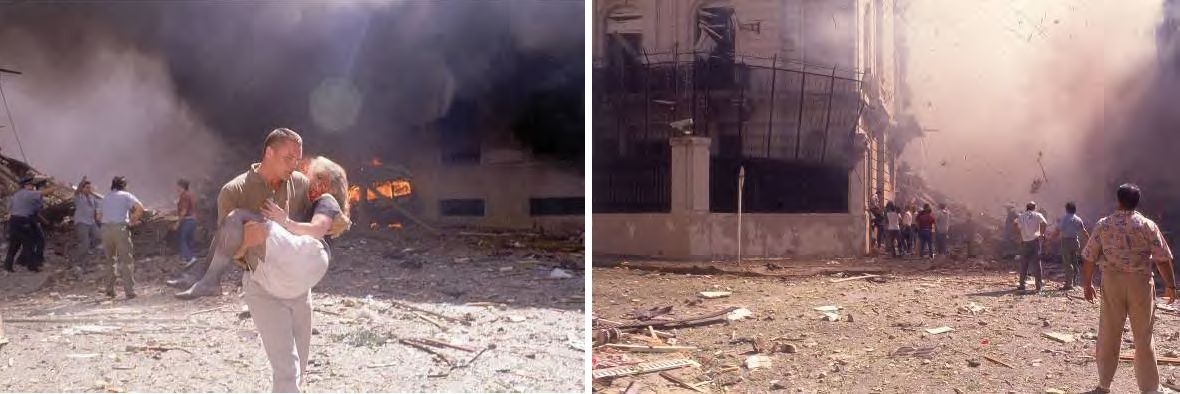


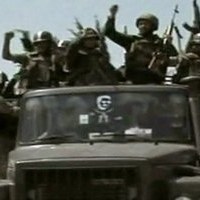
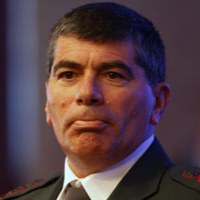
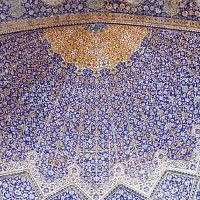
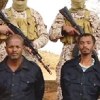
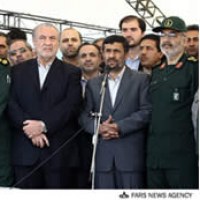




[…] Section I – Terrorism: Latin America as an arena for Iranian-Hezbollah terrorism. […]
[…] Section I — Terrorism: Latin America as an arena for Iranian-Hezbollah terrorism. […]
Fantastic comprehensive article. It is really disheartening how Islamic Coruption has found it’s way into the highest eschelons of Latin American Government.
I say this on the day that a bomb has killed at least 3 and injured many Israelis on a tour bus in Bulgaria. This same entity, Iran, is killing innocent civillians. It dates back to at least 1993 or so, when the Jewish community center in Argentina was bombed, killing 80 or so people there, with the complicity of President Menem, himself of Muslim background and his corrupt businessman friends.